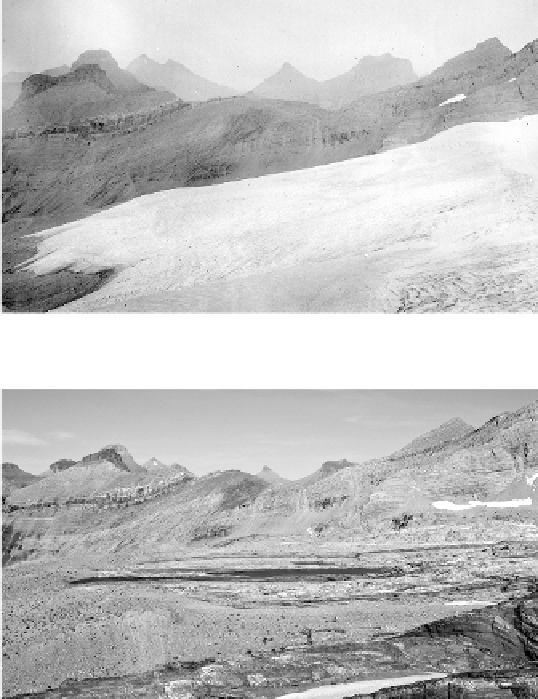Geoscience Reference
In-Depth Information
Sperry_c1920_Elrod_UM
Sperry_mid_2008_McKeon_USGS
Figure 20.2.
Photos of Sperry Glacier, Montana in 1920 and 2008 demonstrate the extensive
ice loss typical of glaciers in the Rocky Mountains in the last 100 years.
River Range had shrunk by more than 30% since 1950 and that they were
half the size than when fi rst photographed in the 1890s. Gannett glacier
alone lost 50% of its volume since 1920 and is expected to disappear by 2050
at current rates of retreat. Further south in Colorado, several very small
glaciers continue to exist because snow avalanches and wind-deposited
snow contribute enough mass to compensate for shrinking due to warming
temperatures (Hoffman et al. 2007).
In Canada, the same trends are evident. The Peyto Glacier in Banff
National Park, Alberta, has been monitored since 1896. Peyto has lost 70%
of its volume in that time, and had only fi ve positive mass balance years
between 1970-2003 (Comeau et al. 2009). The Athabasca glacier, the largest in

Search WWH ::

Custom Search